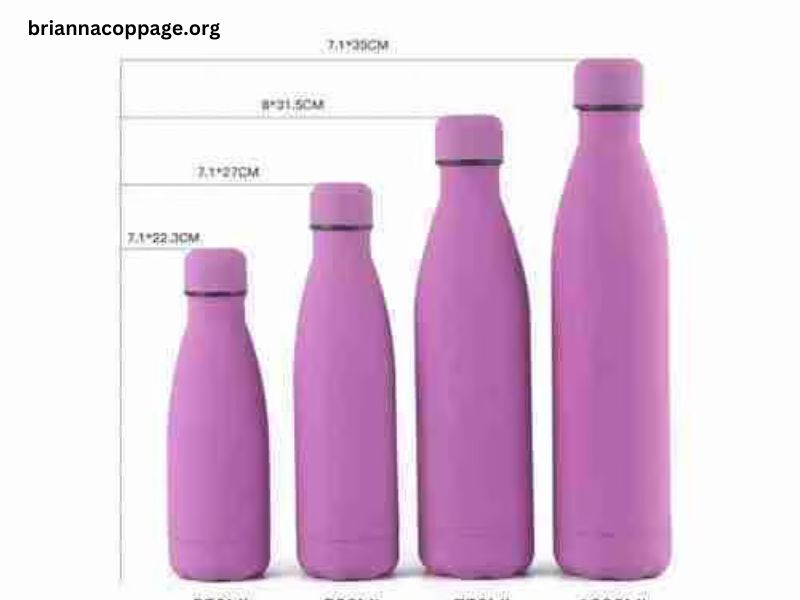Water is essential for life, and staying hydrated is a vital aspect of maintaining good health. With the rise in bottled water consumption worldwide, it’s crucial to understand the different sizes available on the market. Whether you’re at the store trying to figure out which size to buy or you’re trying to gauge how much water you need for daily hydration, knowing how many ounces are in a typical bottle of water can be helpful.
This article explores the standard sizes of bottled water, the concept of ounces as a unit of measurement, and the factors that influence bottled water sizes. By the end, you will have a clearer understanding of how many ounces are in a bottle of water and how that impacts your hydration needs.
The Basics: What Is an Ounce?
An ounce (oz) is a unit of weight or volume that is commonly used in the United States to measure liquid substances like water. It is part of the imperial measurement system, which is still widely used in the U.S., unlike the metric system, which predominates in most other countries.
In terms of liquid measurement:
- 1 fluid ounce (fl oz) equals approximately 29.57 milliliters (mL).
- 8 fluid ounces (fl oz) make up 1 cup (about 237 milliliters).
- 16 fluid ounces (fl oz) make up 1 pint (about 473 milliliters).
So, when we talk about ounces in bottled water, we are referring to fluid ounces, which measure the volume of the liquid, not its weight.
Common Bottled Water Sizes
Bottled water comes in various sizes, each designed to cater to different needs, whether you’re looking for a small, single-serving bottle or a large, family-size container. Here are the most common bottle sizes and their respective ounce measurements:
1. Small Bottles: 8 oz to 12 oz
Small bottles of water typically range between 8 and 12 ounces. These are perfect for a quick drink or when you’re on the go. These bottles are common in vending machines, convenience stores, and lunchboxes. At 8 ounces, a bottle of water is roughly equivalent to one cup, which is the typical serving size for a drink.
Examples:
- An 8 oz bottle of water might be found in a pack for children’s lunches or as single-serving bottled water in public spaces.
- A 12 oz bottle is slightly larger and can be seen in stores as a convenient size for individual consumption.
2. Medium-Sized Bottles: 16.9 oz
The 16.9-ounce bottle is the most common bottled water size found in most supermarkets and convenience stores. This size is equivalent to about 500 milliliters, or just a little more than two cups of water. It’s a popular size for individual consumption and is often used for both personal hydration and as a reference for daily water intake goals.
Examples:
- Many brands of bottled water (such as Aquafina, Dasani, and Poland Spring) offer this size as their standard option.
- The 16.9 oz bottle is also the most common size for water bottles sold in bulk or as part of a multipack.
3. Larger Bottles: 20 oz to 24 oz
Bottles of water in the 20 oz to 24 oz range are also fairly common, especially for people who want more water without needing to carry an excessively large bottle. These bottles are often sold in sports or outdoor sections of stores, as they cater to active individuals who need more water during exercise or long commutes.
Examples:
- A 20 oz bottle of water might be preferred by someone looking for a larger serving than the standard 16.9 oz but still within a manageable size.
- The 24 oz bottle is even larger and might be used for gym-goers, hikers, or people who want to drink more water between meals.
4. Family and Bulk Sizes: 32 oz to 128 oz
When it comes to bulk water bottles, the sizes increase significantly. Family-size bottles often start at 32 ounces, but they can go all the way up to a gallon, which is 128 ounces. These larger bottles are not designed for single-serving consumption but for use in a home or office where a large amount of water is needed throughout the day.
Examples:
- A 32 oz bottle might be seen in reusable water bottles or larger disposable water bottles designed for personal hydration over a longer period.
- A 64 oz bottle is often used in outdoor settings, and a 128 oz (one gallon) bottle is typical for large families or for those who want to keep a gallon of water available at all times.
The Impact of Different Ounce Sizes on Hydration
Different bottle sizes are suited to different hydration needs. To understand how these different sizes affect your water intake, it’s important to consider the recommended daily water intake guidelines.
How Much Water Should You Drink Each Day?
The National Academies of Sciences, Engineering, and Medicine recommends a general daily water intake of:
- About 3.7 liters (125 ounces) for men.
- About 2.7 liters (91 ounces) for women.
This guideline includes all fluids consumed throughout the day, not just water—such as drinks like coffee, tea, and other beverages, as well as moisture content in foods.
- For Men: Drinking roughly 125 ounces of water would mean consuming a little over seven 16.9 oz bottles of water throughout the day.
- For Women: To meet the 91 ounces per day recommendation, you would need about five 16.9 oz bottles of water.
Using bottles in different ounce sizes can make it easier to track your water intake and ensure you’re drinking enough water throughout the day.
Hydration on the Go
When you’re on the go, choosing the right size bottle can help you stay on track. For example, if you are trying to drink a certain amount of water by the end of the day, you might choose a 16.9 oz bottle because it is easy to calculate how many you need to reach your hydration goal. Alternatively, if you’re in a setting where you have limited access to refills (like a hike or a long road trip), you might choose a larger bottle, such as a 32 oz or even a 64 oz container.
Reusable Bottles vs. Disposable Bottles: Ounce Considerations
As environmental concerns have grown, more people are opting for reusable water bottles rather than disposable plastic bottles. Reusable bottles are typically sold in sizes ranging from 16 oz to 40 oz or more, depending on the brand and purpose.
- Reusable 16 oz bottles are great for short periods of hydration, such as a workout session or a short commute.
- 32 oz or 40 oz bottles are popular for those who want a larger quantity of water throughout the day, particularly those who engage in outdoor activities or long hours of work.
With reusable bottles, you can refill as needed, giving you flexibility and reducing your environmental footprint.
How to Choose the Right Bottle Size for You
When deciding which size bottle to purchase, you need to consider a few factors:
- How much water do you drink per day? If you drink large quantities of water, larger bottles are ideal. However, if you’re trying to monitor your intake, smaller bottles like the 16.9 oz option may be easier to track.
- Your lifestyle: If you’re constantly on the go, a smaller 8 oz to 12 oz bottle may be more convenient. For outdoor activities or long hours at work, a 24 oz or larger bottle might be more practical.
- Environmental Impact: If you want to reduce waste, consider investing in a reusable bottle that can be refilled.
Conclusion
The number of ounces in a bottle of water varies widely depending on the brand and the type of container. From small 8 oz bottles to large 128 oz gallon jugs, bottled water comes in many sizes to meet the needs of different consumers. The most common bottle size is 16.9 ounces (500 milliliters), which provides a single serving of water for the average person.
Understanding how many ounces are in a bottle of water can help you manage your hydration, especially when you’re trying to meet the recommended daily water intake. Whether you choose a small, medium, or large bottle depends on your personal needs and lifestyle, but the most important thing is to stay hydrated. So, next time you’re picking up a bottle, you’ll have a better idea of how many ounces you’re consuming and how it fits into your daily hydration routine.






